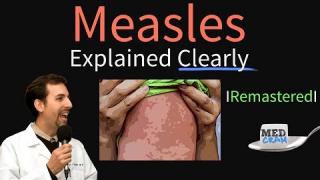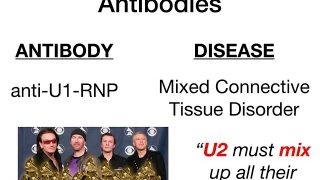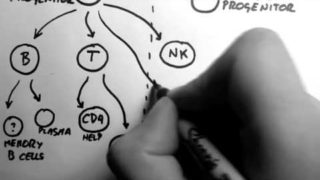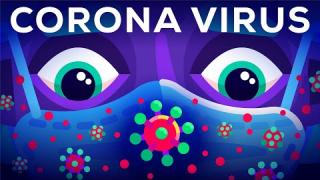The Science of HIV and AIDS
What is it, and are we close to a cure?
SHARE on Twitter: http://bit.ly/1NalHm8 & Facebook: http://on.fb.me/1MTLpMp
Get a FREE Audible Trial: http://audible.com/asap
Written by Rachel Salt, Mitchell Moffit and Gregory Brown
SUBSCRIBE for more (it's free!): http://bit.ly/asapsci
GET THE ASAPSCIENCE BOOK: http://asapscience.com/book/
FOLLOW US!
Instagram and Twitter: @whalewatchmeplz and @mitchellmoffit
Clickable: http://bit.ly/16F1jeC and http://bit.ly/15J7ube
AsapINSTAGRAM: https://instagram.com/asapscience/
Facebook: http://facebook.com/AsapSCIENCE
Twitter: http://twitter.com/AsapSCIENCE
Tumblr: http://asapscience.tumblr.com
Vine: Search "AsapSCIENCE" on vine!
SNAPCHAT 'whalewatchmeplz' and 'pixelmitch'
Created by Mitchell Moffit (twitter @mitchellmoffit) and Gregory Brown (twitter @whalewatchmeplz).
Send us stuff!
ASAPSCIENCE INC.
P.O. Box 93, Toronto P
Toronto, ON, M5S2S6
Further Reading:
https://www.aids.gov/hiv-aids-basics/hiv-aids-101/global-statistics/ The Global HIV/AIDS Epidemic
HIV Transmission http://www.cdc.gov/hiv/basics/transmission.html
http://lcbb4.epfl.ch/reading/HIV/2013-PeetersOriginEpidemiologyHIV.pdf The origin and molecular epidemiology of HIV
https://www.ncbi.nlm.nih.gov/pmc/articles/PMC2441482/ Env length and N-linked glycosylation following transmission of Human Immunodeficiency Virus Type 1 subtype B viruses
http://www.researchgate.net/profile/Pavel_Pugach/publication/8679190_The_CCR5_and_CXCR4_coreceptors--central_to_understanding_the_transmission_and_pathogenesis_of_human_immunodeficiency_virus_type_1_infection/links/0fcfd51200b440c2fe000000.pdf The CCR5 and CXCR4 coreceptors-central to understanding the transmission and pathogenesis of human immunodeficiency virus type 1 infection. AIDS Res. Hum. Retroviruses 20, 111-126
http://dspace.uah.es/dspace/bitstream/handle/10017/5071/840.pdf?sequence=1 Dimerization inhibitors of HIV-1 reverse transcriptase, protease and integrase: A single mode of inhibition for the three HIV enzymes?
http://www.biomedcentral.com/content/pdf/1742-4690-6-40.pdf A historical reflection on the discovery of human retroviruses
http://www.ms.uky.edu/~ma137/Fasttrack13/HIV_Perelson_Science1996.pdf HIV-1 Dynamics in Vivo: Virion Clearance Rate, Infected Cell Life-Span, and Viral Generation Time
Precise determination of time to reach viral load set point after acute HIV-1 infection. http://www.ncbi.nlm.nih.gov/pubmed/23143525
http://www.nature.com/nature/journal/v362/n6418/abs/362355a0.html HIV infection is active and progressive in lymphoid tissue during the clinically latent stage of disease
http://www.joponline.org/doi/abs/10.1902/jop.1994.65.5.393 Necrotizing Ulcerative Periodontitis: A Marker for Immune Deterioration and a Predictor for the Diagnosis of AIDS
https://www.aids.gov/hiv-aids-basics/just-diagnosed-with-hiv-aids/hiv-in-your-body/stages-of-hiv/ Stages of HIV Infection
http://www.cdc.gov/hiv/basics/livingwithhiv/opportunisticinfections.html Opportunistic Infections
https://aidsinfo.nih.gov/drugs/445/pyrimethamine/0/patient AIDSinfo Drug Database
http://www.cdc.gov/hiv/basics/prep.html PrEP
http://www.who.int/hiv/topics/mtct/q2_chi_2007.pdf Single-dose tenofovir and emtricitabine for reduction of viral resistance to non-nucleoside reverse transcriptase inhibitor drugs in women given intrapartum nevirapine for perinatal HIV prevention: an open-label randomised trial
http://dspace.uah.es/dspace/bitstream/handle/10017/5071/840.pdf?sequence=1 Dimerization inhibitors of HIV-1 reverse transcriptase, protease and integrase: A single mode of inhibition for the three HIV enzymes?
http://lcbb4.epfl.ch/reading/HIV/2013-PeetersOriginEpidemiologyHIV.pdf
http://www.ncbi.nlm.nih.gov/pmc/articles/PMC3234451/
http://www.nejm.org/doi/full/10.1056/NEJMoa0802905 Long-Term Control of HIV by CCR5 Delta32/Delta32 Stem-Cell Transplantation
The Science of HIV and AIDS
Other Videos You Might Like:
Subscribe
Login
995 Comments
Newest




